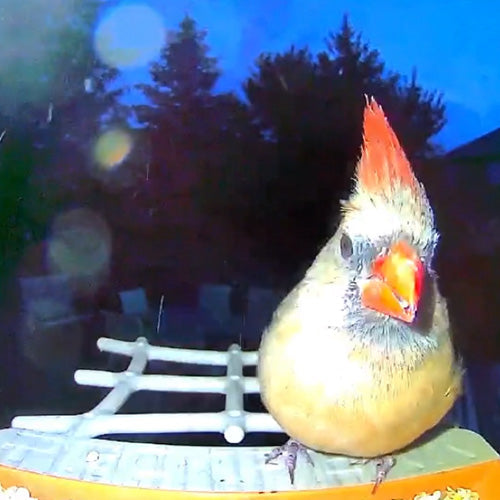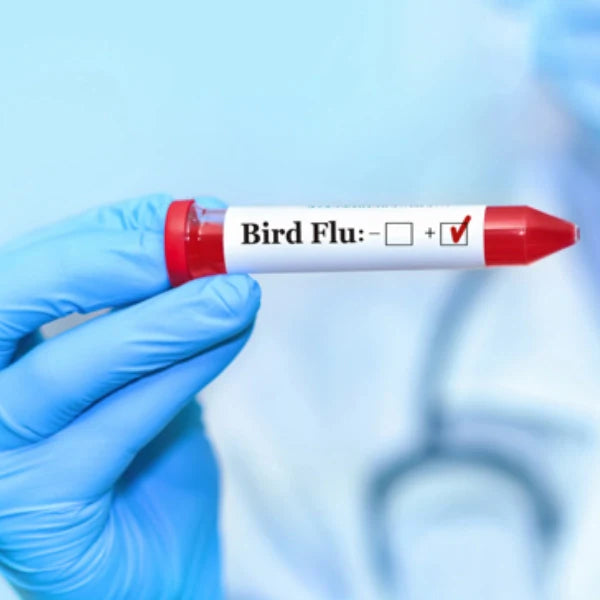- Why is wildlife finance important in 2025?
- Smart feeders are data-driven conservation tools, empowering citizen science and promoting sustainable resource allocation.
- Technology, donations, and social sharing amplify impact, allowing individuals to contribute to wildlife conservation efforts actively.

Source: https://www.wildlifeday.org/
Why Wildlife Finance Matters in 2025
Wildlife finance is crucial in 2025, which is not just a good idea-it's a necessity. Why? We see obvious changes: habitats are shrinking and species are disappearing. The UN agreement? It's a start. But we need action. Your action.
1. Loss of Biodiversity:
Species extinction rates are alarming. Did you know we're losing many species at a rate 1,000 times higher than the natural background rate? Each lost species disrupts ecosystems. Think about coral reefs: if you remove one keystone fish, the entire reef system collapses, impacting the ecology of the entire ocean. Change is urgent because we rely on stable ecosystems for clean air, water and food.
Source: Francesco Ungaro | Unsplash
2. Climate Change Impact:
Climate change fuels habitat destruction. Wildfires, floods, and rising sea levels destroy homes for countless animals. For example, polar bears are losing sea, ice, and their hunting grounds. Thus, we can support initiatives aimed at habitat preservation. Investing in reforestation, for example, helps pull carbon from the air and makes a real difference.
3. Economic Benefits:
We need to create healthy ecosystems because it is not only good for wildlife, but also boosts the local economy. Tourism, fishing, and agriculture depend on healthy ecosystems. For instance, In areas blessed with beautiful natural resources but facing economic challenges, developing nature-based tourism can not only create many job opportunities, but also help raise funds for protecting our biodiversity. So, nature-based tourism is a great option for people on vacation.

Source: Getty Images | Unsplash
4. Global Health:
Some diseases can spread from animals to humans, and habitat loss increases this risk. For example, Lyme disease is linked to fragmented forests. So, in order to monitor and prevent these outbreaks from happening, supporting wildlife conservation finance is necessary.
5. Ethical Responsibility:
We're all part of this planet, so biodiversity is our shared responsibility. And future generations deserve a vibrant world with diverse wildlife. It's not just about survival, it's about the quality of life. So we should ask ourselves, "What kind of world do we want to leave behind?"

Source: Alfred Kenneally | Unsplash
6. Technological Integration:
Advances in tech, like AI, improve wildlife conservation efforts. For instance, drones monitor wildlife populations. Artificial intelligence techniques have also been utilized to anticipate vector-borne diseases. Furthermore, AI can also analyze vast datasets to predict animal behavior, like a smart bird feeder with a camera. You can upload the collected bird data to the eBird, which is a global crowdsourced platform managed by the Cornell Lab of Ornithology, enabling birders to record sightings, share data, and contribute to conservation science. So, we need a lot of money to develop these smart tools.
7. Community Engagement:
Conservation works better when communities are involved. So funding can support local initiatives that educate and empower individuals. Plus, people can participate in many citizen science projects, such as bird counts, and use social media to connect with local conservation groups.
We can't ignore the facts. The need for wildlife finance grows. It encompasses science, economics, and ethics. Small actions, when combined, create real change. We must invest now to protect our planet's future. Well, can everyday actions, like feeding birds, contribute to a global conservation strategy? Yes! Only need a smart bird feeder~

Smart Bird Feeders as Conservation Tools
You might wonder, "How does a backyard bird feeder make a difference?" Let's explore.
1. Empowering Citizen Science
Imagine every smart bird feeder as a mini research station. We can collect relevant data and provide it to a data platform like eBird. These data are gold for scientists.
AI Species ID: We don't need to google or flip through bird books. AI instantly IDs birds, even rare or challenging species, providing precise data for scientific analysis.
Behavior Tracking: Sensors can capture detailed data on bird activity, such as migration patterns, feeding habits, and even nesting behaviors. So it can reveal crucial information about their life cycles.
Cost Reduction: Traditional monitoring is expensive and involves field teams and manual data entry. Smart feeders slash these costs, which means more funds can be spent on direct wildlife conservation efforts, like habitat restoration and anti-poaching initiatives.
Imagine this: Your bird feeder helps track the decline of a vulnerable species. And the data you provided may influence policy, shaping conservation strategies and resource allocation. Isn't that amazing?

2. Sustainable Resource Allocation
Waste is a big problem with traditional bird feeding. Traditional feeders spill seeds, attracting pests and creating a mess. How about smart bird feeders? Let's move on.
Precise Feeding Birds: Smart dispensers release feed based on bird activity, minimizing spillage. Less waste means more food for birds and a healthier environment.
Eco-Friendly Design: Smart feeders often use sustainable materials, such as recycled plastics or bamboo, reducing their environmental footprint.
A simple change, like switching to a smart feeder, reduces waste and promotes sustainable development. This aligns with the theme of WWD "Investing in Planet" by showing how small tech innovations can have a big impact on resource management.

Source: Lidia Stawinska | Unsplash
3. Building Community-Driven Conservation
"Investing in people" goes beyond just financial investment, but making human development the cornerstone of wildlife protection through empowerment, cooperation and systematic support. Using smart bird feeders is a good example, which is reflected in the following three aspects.
Family Education: You can share bird watching with your family through the app of smart bird feeder. This is very meaningful for families with children, as it can help cultivate children's love and protection of animals from a young age.

Source: Vitolda Klein | Unsplash
Local Groups: If you join the bird counts, habitat restoration efforts, and educational workshops organized by local conservation groups, you can share the bird data collected by your smart bird feeder. By becoming an active part of these local conservation initiatives, you'll help to foster a strong community of conservationists!
Public Awareness: You can share the interesting photos taken by the bird feeder with camera on social media. Social sharing educates and inspires others to join the conservation movement. Plus, it can also raise awareness about local bird populations and conservation efforts.
We see a shift in how people engage with wildlife conservation. Using AI tools is a popular trend today. Smart bird feeders provide people with a meaningful way to contribute, and everyone can be part of the wildlife conservation project.
Ready to Soar with PeckPerk for Wildlife Conservation Finance?
Want to experience the power of smart bird feeders? Then don't hesitate to add one to your backyard. It can not only attract more beautiful birds to your backyard, but also contribute to protecting the earth's extinct biodiversity.
Remember, no matter how insignificant the actions may seem, they are very important. You are not just a bird watcher; you are also an environmentalist in action.
1. Smart Bird Feeders
- All-color night vision for 24/7 bird watching.
- High-definition camera and user-friendly app.
- Capture stunning bird footage and learn about the species.
- Real-time motion alerts.
- Weatherproof build and easy setup.
- Unique squirrel-proof algorithm
- Non-stop solar power.
- ...
2. Share Your Stories and Raise Wildflife Conservation Awareness
Join PeckPerk, where technology and nature come together, and we warmly invite you to be part of this exciting journey!
Post Your Observations: Share photos and videos from your smart bird feeder on PeckPerk social media, like Instagram. Use relevant hashtags to reach a wider audience. Moreover, send your submissions to info@peckperk.com for a chance to be featured on our website and social media!
Educate Your Followers: Share facts about local bird species and conservation efforts.
Connect with PeckPerk: Join our online community. Follow us on social media for updates (such as Giveaways) and conservation tips.

Source: Melissa Burovac | Unsplash
In Conclusion
The $200 billion biodiversity target set by COP15 isn’t just a number—it’s a call to action. As World Wildlife Day 2025 highlights, individuals hold power. We all have a role to play. By embracing tools like AI smart bird feeders, we bridge policy goals and grassroots impact. Every shared effort fuels a healthier planet for future generations. Small actions, when combined, create significant change. Let's make 2025 a year of impactful conservation!
FAQ
1. What is a smart bird feeder?
A smart bird feeder is more than just a container for birdseed. It's a technology-enhanced device that uses cameras, sensors, and artificial intelligence to identify birds, track their behavior, and collect valuable data for conservation efforts. Some smart feeders even offer features like motion-activated alerts, night vision, and squirrel-deterrent mechanisms.
2. How to make a bird feeder for a school project?
Creating a simple bird feeder for a school project is a fun and educational activity. You can find numerous DIY bird feeder ideas online using materials like recycled plastic bottles, pine cones, or milk cartons. These projects teach children about birds, their feeding habits, and the importance of conservation.
3. Can technology really make a difference for small-scale conservation?
Absolutely! Technology plays a crucial role in small-scale conservation efforts. Here's how:
Citizen Science: Smartphones and apps allow anyone to become a citizen scientist, contributing to data collection and monitoring efforts. This expands the reach of conservation research and allows for more comprehensive data gathering.
Community Building: Online platforms and social media connect individuals and local conservation groups, facilitating collaboration and knowledge sharing.
Education and Awareness: Technology provides accessible tools for learning about local wildlife and conservation issues. This empowers individuals to take action and make informed decisions.
Monitoring and Protection: Affordable camera traps, drones, and acoustic sensors can be used to monitor wildlife populations, detect poaching activity, and protect habitats.
Even small-scale technology initiatives, like using a smart bird feeder, contribute to a larger network of conservation efforts. This collective action can lead to significant and lasting impacts on wildlife and their habitats.






Leave a comment
All comments are moderated before being published.
This site is protected by hCaptcha and the hCaptcha Privacy Policy and Terms of Service apply.